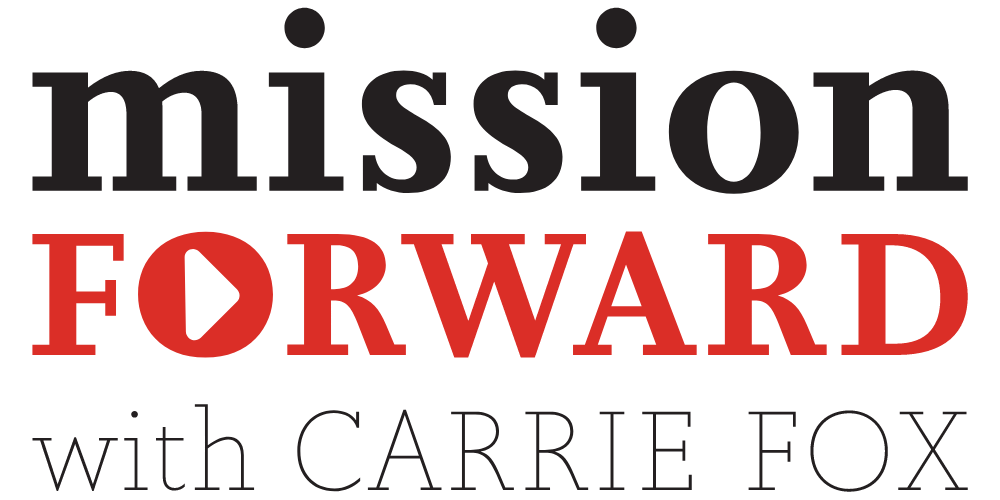"Calm and Not Chaos"
This article is part of Finding the Words, a newsletter that delivers practical insights on the day’s issues.
On an October evening eight years ago, a record-breaking 84 million people—me included—watched a debate between then-presidential hopefuls Donald Trump and Hillary Clinton. As he followed her around the stage, interrupting and infamously “looming behind her”, I felt chaos on the stage—a precursor of what was to come.
Last night I had a similar reaction, for a very different reason.
We are nearing the end of the closest U.S. presidential race in 16 election cycles. And for context on just how close, CNN data analyst Harry Enten recently reported that in the 15 presidential elections since 1964, a candidate has led by more than five points in the national polling average for at least three weeks. In 2024, as Axios reported in this must-read edition, “that hasn't been the case for a single day. The race is extraordinarily close—and will come down to tens of thousands of votes in just seven battleground states.”
And, according to a recent NPR/Marist/PBS News poll, nearly a third of all voters planned to use the debate to help them determine their vote. While the debate stage was far more controlled than in 2016, there were still plenty of unknowns coming into the event—including Vice Presidential Kamala Harris herself, who, as USA Today reported, needed this debate to “introduce herself to voters who feel they know little about her.”
So, how did she do, and what can we learn from how the Vice President communicated?
Here are my top takeaways:
1. The power of the smile and a handshake. With her shoulders back, standing upright and confident, she entered the debate stage with a purpose, striding up to Donald Trump and extending her hand for a shake. Keep in mind that presidential candidates haven't shaken hands since the first debate between Trump and Hillary Clinton in 2016. Not only did she bring back the handshake, but she did it with a smile.
2. What you do and say at the start matters. As Lisa Desjardins reported in PBS, “There is animated debate over debates themselves—whether and when they matter. But many agree that the start of these debates is the most critical window.” Kamala Harris started with a story, and stayed focused—on her key points, on the questions, and even on Donald Trump as he spoke.
3. Body language can connect dots between our words. Even when Kamala Harris wasn’t speaking, her body language was sending signals to the audience. She was confident and assured, using her eyes, eyebrows, hands, and smile to reinforce her messages.
4. Repetition works. Vice President Kamala Karris’ use of careful repetition was another excellent device to reinforce her key points. Several times throughout the night, she would hang on a phrase, such as “I’ve got a plan…” and “Trump left us….” And then follow up with short responses, as if delivering the chorus of a song. It was memorable, and kept the audience focused on her words.
5. And, start and end with a story. Stories help us understand complexity and connect with each other. And in a highly controlled debate environment, they can bring some authenticity and humanity into the room. Harris opened with a story, and she closed with one, about her time as a prosecutor. In that story, she reinforced a line from her convention speech, “I only have one client: the people,”…and then she added, “and it’s not about asking the people if they’re Republican or Democrat, it’s about asking, “Are you ok?” It was an emotionally compelling close, with three words designed to transcend the debate stage.
Moments after the debate ended, Taylor Swift endorsed Harris, saying "I believe we can accomplish so much more in this country if we are led by calm and not chaos.”
Calm and not chaos.
Bottom line: From her body language to her focus and strategic use of story, Kamala Harris took the stage last night to connect with voters. She conveyed calmness under pressure and experience over ego, and she showed the power of communication when used as a force for good.
This post is part of the Finding The Words column, a series published every Wednesday that delivers a dose of communication insights direct to your inbox. If you like what you read, we hope you’ll subscribe to ensure you receive this each week.







I know the feeling of wanting more from a colleague—and the feeling of personally underdelivering. Even when I’ve given something my all, sometimes the results are less than I hoped. Those moments can be defeating, and they can knock us off course. If they happen too often, they’re a certain recipe for job transition. So, I’ve come to navigate these requests differently in recent years.